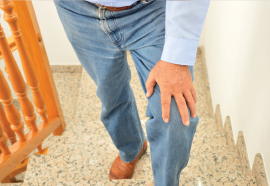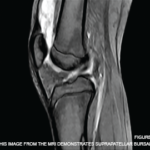
ESCEO recommends systematic repeated intra-articular hyaluronic acid injections as second-line treatment for patients with knee OA.
cunaplus/shutterstock.com
An international task force convened by the European Society for Clinical and Economic Aspects of Osteoporosis and Osteoarthritis (ESCEO) recommends systematic repeated intra-articular hyaluronic acid (HA) injections as second-line treatment for patients with knee osteoarthritis (OA). This is the first time a group of experts has made this recommendation, which is directed toward treatment of patients who have had a beneficial response with a previous cycle of treatment.1
The review article highlights the safety profile of the treatment and its “moderate but real” efficacy on symptoms. The efficacy of intra-articular HA, according to the review, is in the same range as other pharmacologic modalities used for knee OA, but does not have the vascular and gastrointestinal toxicity of acetaminophen and non-steroidal anti-inflammatory drugs (NSAIDs) or the adverse events associated with corticosteroid injections in some patients.
The ESCEO task force recommends that intra-articular HA be used in patients who remain symptomatic despite continuous or intermittent treatment with conventional pharmacologic treatment modalities, such as acetaminophen, symptomatic slow-acting drugs and NSAIDs, and in patients with comorbidities that preclude the use of NSAIDs. The evidence for this recommendation was drawn from real-life clinical data.
“The medical community cannot afford to neglect the use of [intra-articular] HA, particularly now that systematic repetitive treatment cycles have been shown to yield positive results in terms of both efficacy and safety,” the task force members said. The review “encourages the use of repeated cycles of [intra-articular] HA in patients who responded to the first injection, starting a new treatment cycle as soon as the first symptoms appear.”
Additionally, the task force found no current clinical evidence supporting an advantage in efficacy of one intra-articular HA product over another. If intrinsic properties of a product, such as its molecular weight, provide a beneficial result when compared with other intra-articular HA products, “characteristics related to the patient are likely to prevail,” the authors said.
Professional Guidelines
The task force notes that other professional groups have weighed in on the efficacy of intra-articular HA for treatment of knee OA. “However, while IAHA was initially clearly recommended by national and international professional societies, such as the Osteoarthritis Research Society International (OARSI), the European League Against Rheumatism (EULAR) and the [ACR], some clinicians, researchers and decision makers feel that current guidelines are conflicting and less favorable than 10 years ago,” the review states.


